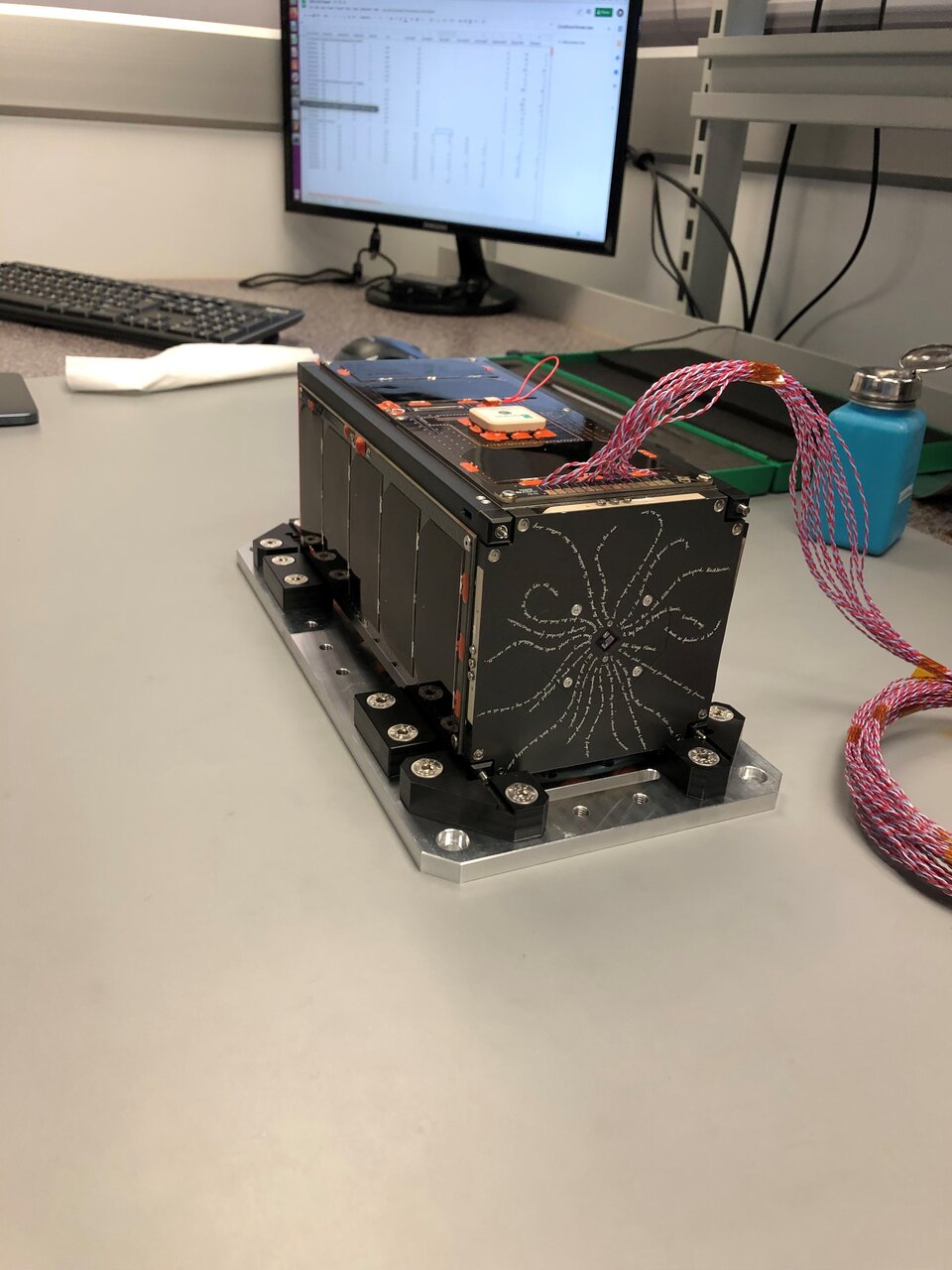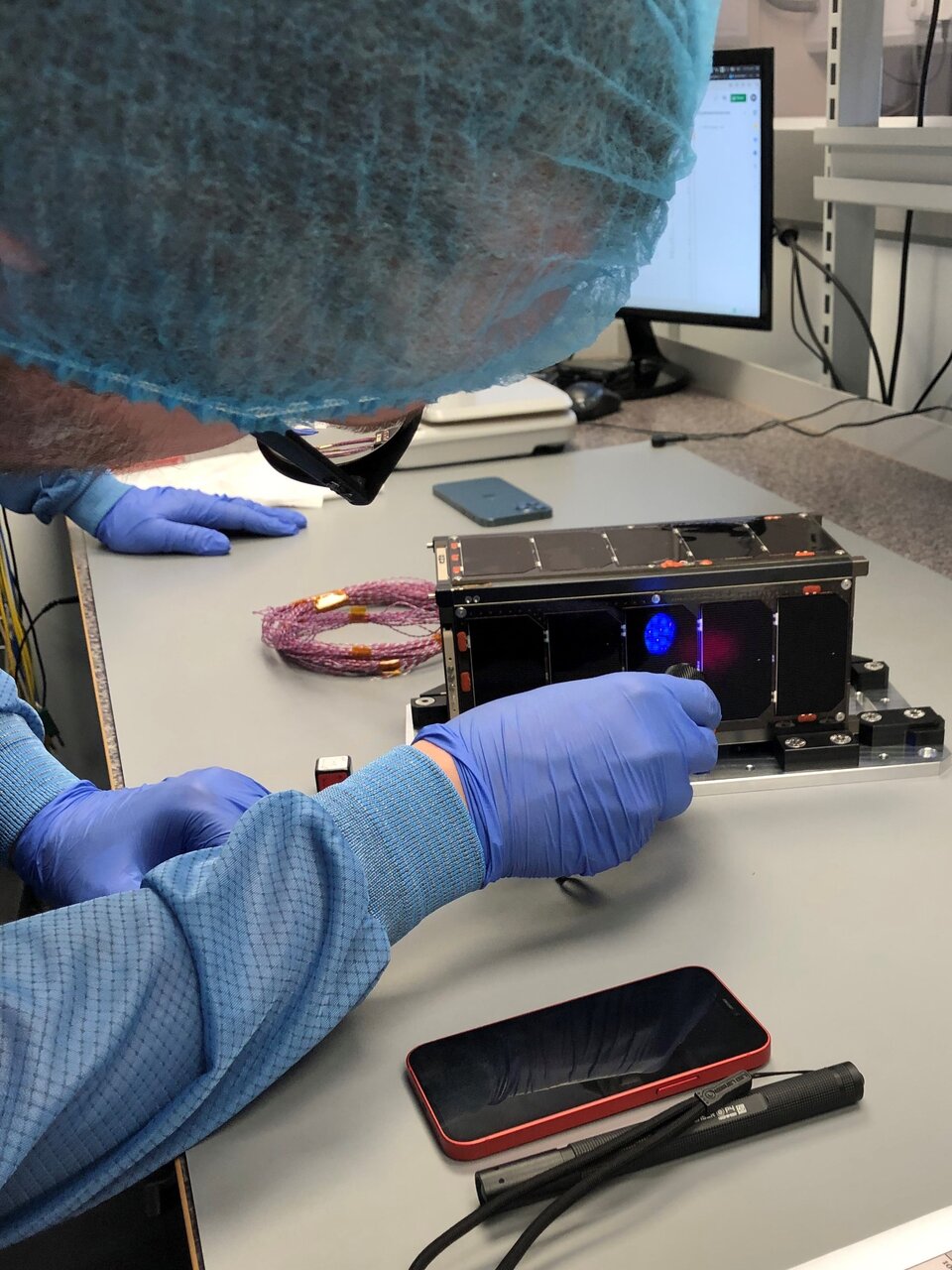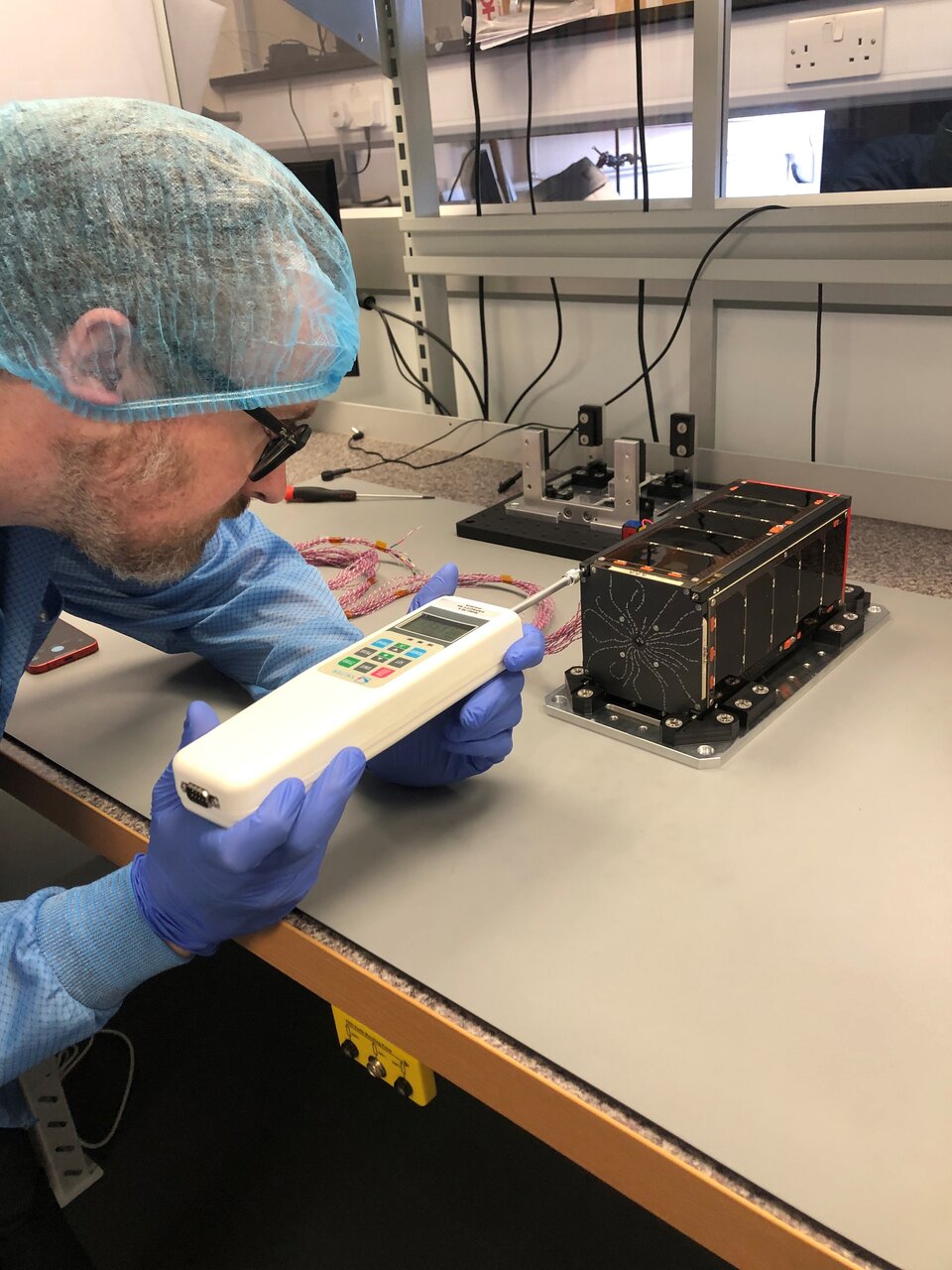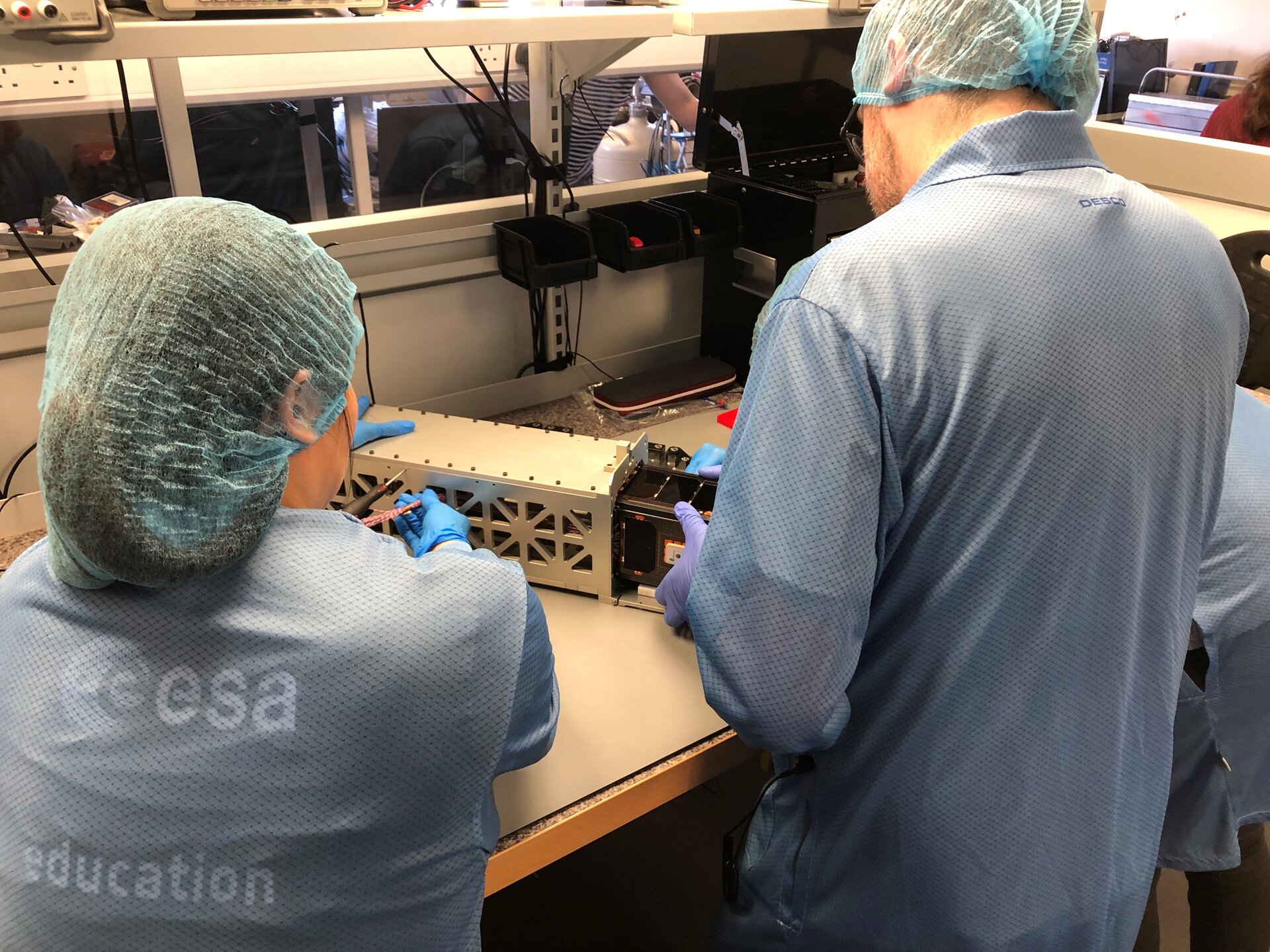Fly Your Satellite! team EIRSAT-1 have successfully assembled their Flight Model!
In brief
EIRSAT-1 is an ambitious 2-unit CubeSat designed and built by students from University College Dublin. Part of the Fly Your Satellite! programme, it is hoped that one day soon it will fly into space – but not before all the necessary tests have been undertaken. The team recently completed an intense environmental qualification campaign, and have now taken another important step forward by finishing their Flight Model’s assembly and integration.
In-depth

"The Flight Model integration activities took place over a few days, but they represent years of preparation,” explained a participating student. “After many prototypes and the qualification model, it is incredibly satisfying to be able to work with the Flight Model, the version of our satellite that will actually be in space!”
Assembly and integration proved to be a particularly challenging part of the students’ journey. EIRSAT-1’s payloads and an Antenna Deployment Module were manufactured in-house by the students, and had to be rigorously tested at the ESA CubeSat Support Facility in Belgium to ensure confidence in the design. In addition, all COTS (commercial, off-the-shelf) subsystems have been inspected and undergone testing by the EIRSAT-1 team.

All tests were conducted with the utmost care because despite its diminutive size, EIRSAT-1 is packed with three advanced experiments:
- A Gamma-Ray detector (GMOD) to study the most luminous explosions in the Universe, which occur when a massive star dies, or when two stars collide;
- A thermal coating experiment to study the performance of novel surface treatments (EMOD);
- An attitude control algorithm experiment (wave-based control / WBC) to determine its potential as a viable alternative to standard Attitude Determination and Control methods.
Once assembly was completed, the dimensions, mass, and physical requirements of the satellite were double-checked, along with a careful inspection to reveal any damage or anomalies. So far, so good!

"Being part of the assembly of Ireland’s first satellite, EIRSAT-1, was an amazing experience,” enthused one of the students. “Every member of the team took part in the build. I helped build one of the payloads, GMOD, and installed some solar panel screws. A huge amount of work has gone into the project over the past few years, and culminated in the successful assembly of the Flight Model. It’s incredible that the spacecraft we are now testing in Dublin will be launched into space and we will get to operate it.”
The pace will continue over the coming weeks as the team is scheduled to conduct a functional test campaign to demonstrate that EIRSAT-1 can successfully communicate and be operated by its ground segment.
"It was really special to see the satellite come together after all the hard work it took to get to this point,” added another EIRSAT-1 student. “This is the first time we’ve seen the spacecraft fully assembled, with real solar cells, and it looks great. It’s hard to believe we’re now going to send it to space!”
To keep up-to-date with Fly Your Satellite! developments, please visit the programme's website.


